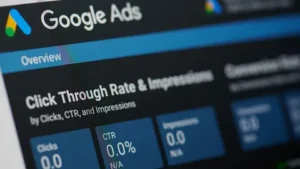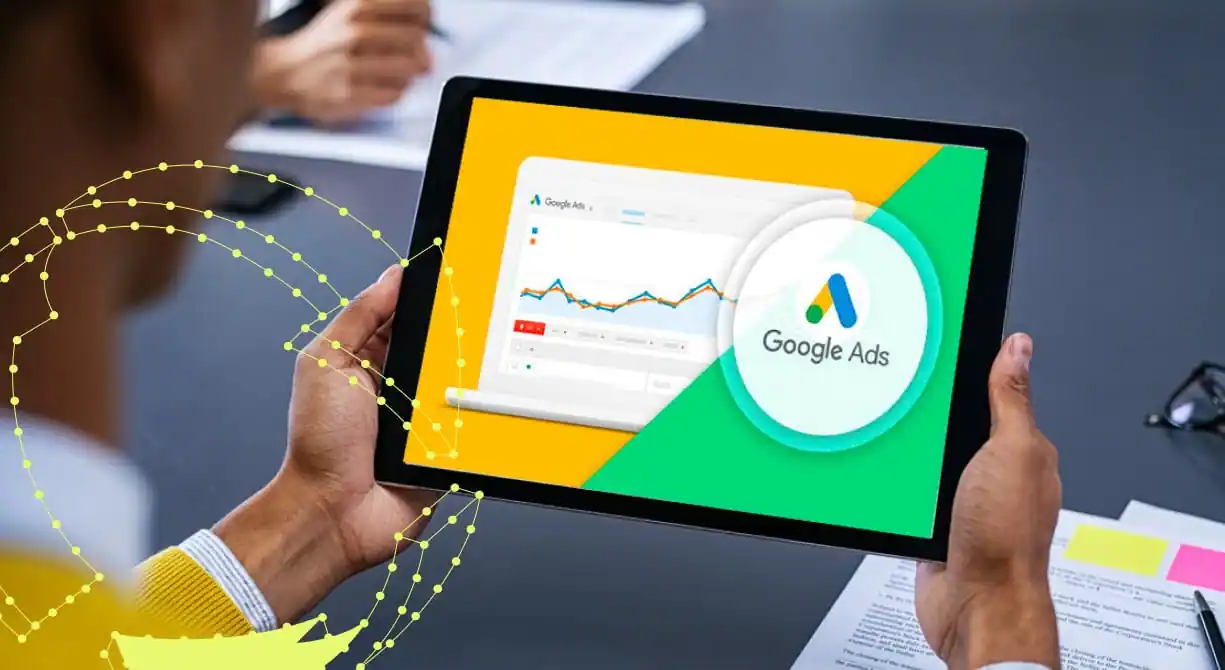How to run google ads for small business: Running Google Ads effectively can be a game-changer for small businesses looking to increase visibility, drive traffic, and boost sales. However, many small business owners struggle with setting up and optimizing campaigns due to limited budgets, lack of expertise, or unfamiliarity with the platform. This guide breaks down the process into manageable components, identifies common challenges, and provides actionable steps to create successful Google Ads campaigns. With real-world examples and prevention tips, you’ll have the tools to maximize your return on investment (ROI) and avoid common pitfalls.
Breaking Down the Problem: Why Running Google Ads Can Be Challenging
Running Google Ads involves multiple components, each with potential challenges that can hinder success if not addressed properly. Below are the key components and common issues associated with them:
1. Account Setup and Campaign Structure
-
Common Causes of Issues: Incorrect campaign types, vague goals, or failure to link accounts (e.g., Google Analytics or Google Business Profile).
-
Consequences: Wasted ad spend, poor targeting, and low-quality traffic that doesn’t convert.
2. Keyword Selection
-
Common Causes of Issues: Choosing overly broad or irrelevant keywords, ignoring negative keywords, or not researching competitor strategies.
-
Consequences: High costs per click (CPC), irrelevant clicks, and low conversion rates.
3. Ad Copy Creation
-
Common Causes of Issues: Generic or unengaging ad copy, lack of clear calls-to-action (CTAs), or failure to align with user intent.
-
Consequences: Low click-through rates (CTR) and poor ad relevance, leading to a lower Quality Score and higher costs.
4. Landing Page Optimization
-
Common Causes of Issues: Slow-loading pages, non-responsive designs, or mismatched content between ads and landing pages.
-
Consequences: High bounce rates, low conversion rates, and wasted ad spend.
5. Budget Management and Bidding
-
Common Causes of Issues: Overbidding on broad keywords, setting unrealistic budgets, or not adjusting bids based on performance.
-
Consequences: Rapid budget depletion, low ROI, or ads not appearing due to insufficient bids.
6. Performance Tracking and Optimization
-
Common Causes of Issues: Not using conversion tracking, ignoring analytics, or failing to refine campaigns based on data.
-
Consequences: Inability to measure success, missed opportunities for optimization, and ongoing inefficiencies.
Potential Consequences of Not Addressing These Issues

Failing to address these challenges can lead to:
-
Wasted Budget: Spending on irrelevant clicks or poorly performing ads.
-
Lost Opportunities: Missing out on potential customers due to low visibility or ineffective targeting.
-
Competitive Disadvantage: Falling behind competitors who optimize their campaigns effectively.
-
Low ROI: Minimal returns on ad spend, making Google Ads seem unprofitable.
Actionable Step-by-Step Guide to Running Google Ads
Below is a detailed, step-by-step guide to setting up and optimizing Google Ads for small businesses, including tools, resources, and strategies to ensure success.
Step 1: Set Up Your Google Ads Account
-
Create an Account: Visit ads.google.com and click “Start Now.” Enter your business name, website, and link any existing Google accounts (e.g., Google Business Profile, YouTube) for tailored recommendations.
-
Choose a Campaign Type: Select a campaign type based on your goals:
-
Search Campaigns: Ideal for driving website traffic or leads via text ads on search results.
-
Smart Campaigns: Recommended for beginners, as Google’s AI optimizes ads automatically.
-
Performance Max: Combines Search, Display, YouTube, and more for maximum reach.
-
-
Set Up Billing: Confirm payment details and set a daily budget (start small, e.g., $5–$10/day).
-
Tool: Google Ads Budget Report (accessible from the campaign view) to monitor spending.
-
Example: A local bakery sets up a Search Campaign to promote “custom birthday cakes” and links their Google Business Profile to display location and reviews in ads.
Step 2: Define Clear Goals
-
Identify Objectives: Choose specific goals like driving sales, generating leads, or increasing brand awareness.
-
Set Conversion Goals: Define actions you want users to take (e.g., form submissions, purchases, or calls). Use Google Analytics to set up goals for website conversions.
-
Track Conversions: Enable conversion tracking in Google Ads to measure actions like purchases or sign-ups. For phone-heavy businesses, use call tracking tools like CallRail.
Example: A plumbing service sets a goal of “maximizing leads” and tracks calls lasting 3+ minutes as conversions to ensure quality leads.
Step 3: Conduct Keyword Research
-
Use Keyword Planner: Access Google’s Keyword Planner (Tools > Keyword Planner > Discover New Keywords) to find relevant keywords with high search volume and manageable competition.
-
Choose Keyword Match Types:
-
Exact Match: Targets specific phrases (e.g., [custom birthday cakes]).
-
Phrase Match: Targets variations (e.g., “custom birthday cakes near me”).
-
Broad Match: Reaches broader searches but may attract irrelevant clicks.
-
-
Incorporate Local Keywords: For local businesses, include location-based terms (e.g., “tax prep Boston”).
-
Add Negative Keywords: Exclude irrelevant terms (e.g., a high-end jeweler adds “cheap” or “discount” to negative keywords).
Tool: Use WordStream’s Free Keyword Tool or Google’s Keyword Planner to estimate CPC and search volume.
Example: A Manchester-based decorator uses “decorators in Manchester” (CPC: £1.33–£3.45) and adds “cheap decorators” as a negative keyword to avoid budget-conscious clicks.
Step 4: Write Compelling Ad Copy
-
Craft Headlines: Write clear, keyword-rich headlines (e.g., “Order Custom Birthday Cakes Today”). Use all three headline fields (30 characters each).
-
Create Descriptions: Highlight benefits and include a strong CTA (e.g., “Call Now for a Free Quote”). Use both description fields (90 characters each).
-
Add Ad Extensions: Use sitelinks (e.g., “Wedding Cakes”), call extensions, or location extensions to increase engagement.
-
A/B Test Ads: Create multiple ad variations to test which performs best.
Example: A personal injury law firm uses two ad descriptions: “98% Success Rate in Injury Cases” and “Get the Compensation You Deserve” to test which drives more clicks.
Step 5: Optimize Landing Pages
-
Align with Ads: Ensure landing page content matches ad copy and keywords to improve relevance and Quality Score.
-
Improve Page Speed: Use tools like Pingdom or Google’s PageSpeed Insights to achieve load times under 3 seconds.
-
Ensure Mobile-Friendliness: Test with Google’s Mobile-Friendly Test to confirm responsiveness.
-
Clear CTAs: Include prominent buttons or forms for actions like “Buy Now” or “Request a Quote.”
Example: A tax preparation service creates a landing page for “small business tax prep” with a clear “Schedule a Consultation” button, reducing bounce rates.
Step 6: Set Budget and Bidding Strategy
-
Determine Daily Budget: Start with a modest budget (e.g., $5–$10/day) and adjust based on performance.
-
Choose Bidding Strategy:
-
Maximize Clicks: Ideal for driving traffic.
-
Maximize Conversions: Best for lead generation or sales.
-
Target CPA: Set a desired cost per conversion for efficiency.
-
-
Use Location Bid Adjustments: Increase bids in high-performing areas and lower in low-performing ones.
Tool: Google Ads’ AI-powered Smart Bidding to optimize bids automatically.
Example: A pizza delivery service bids higher on evenings and weekends when demand peaks, maximizing conversions.
Step 7: Monitor and Optimize Performance
-
Track Metrics: Focus on conversions, CPA, conversion rate, and ROAS instead of clicks or impressions.
-
Use Search Terms Report: Review which queries trigger your ads and add irrelevant ones to your negative keyword list.
-
Analyze Competitor Strategies: Use Google’s Keyword Planner to spy on competitors’ keywords and adapt your approach.
-
Pause Underperforming Ads: Stop ads with low CTR or high CPA and redirect budget to high-performing ones.
-
Leverage Analytics: Connect Google Ads to Google Analytics to track user behavior and refine campaigns.
Example: Prados Beauty, an Indigenous woman-owned company, used conversion tracking to attribute 68% of web traffic and 40% of revenue to Google Ads, optimizing daily campaigns.
Case Study: Real-World Success with Google Ads
Balloons Over Asheville: This hot air balloon ride company in North Carolina used Google Ads to target local keywords like “Asheville balloon rides.” By optimizing their Search Campaign with location-based keywords, connecting their Google Business Profile, and using call extensions, they increased bookings significantly. Their focus on local SEO alongside ads doubled their click-through rates, demonstrating the power of combining paid and organic strategies.
Key Takeaways:
-
Local keywords and Google Business Profile integration boosted visibility.
-
Call extensions drove immediate bookings.
-
Regular monitoring allowed budget reallocation to high-performing ads.
Prevention Tips to Avoid Common Google Ads Pitfalls
-
Regularly Update Negative Keywords: Check the Search Terms Report weekly to exclude irrelevant terms and save budget.
-
Test and Refine Ad Copy: Run A/B tests every 2–4 weeks to identify high-performing variations.
-
Monitor Budget Closely: Use the Google Ads Budget Report to avoid overspending and project performance.
-
Optimize for Mobile: Since 50% of local searches lead to store visits within a day, ensure your website and ads are mobile-friendly.
-
Use a CRM: Implement a customer relationship management (CRM) system to track and nurture leads, preventing missed opportunities.
-
Stay Updated on AI Tools: Leverage Google’s AI-powered features like Smart Bidding and Performance Max to stay competitive.
Next Steps and Call to Action
To start seeing results with Google Ads, take these immediate steps:
-
Set Up Your Account Today: Visit ads.google.com and create your account. Start with a Smart Campaign for simplicity.
-
Run a Small Test Campaign: Allocate a $5–$10 daily budget for 2 weeks to gather data without risking significant spend.
-
Use Free Tools: Leverage Google Keyword Planner and Google Analytics to refine keywords and track performance.
-
Seek Expert Help if Needed: If overwhelmed, contact a Google Ads Expert for free personalized support or explore Google Ads training on Skillshop.
Call to Action: Don’t let a limited budget or lack of expertise hold you back. Start your first Google Ads campaign today to reach new customers and grow your small business. With the right strategy, even a small investment can yield significant returns—take action now and watch your business thrive!
